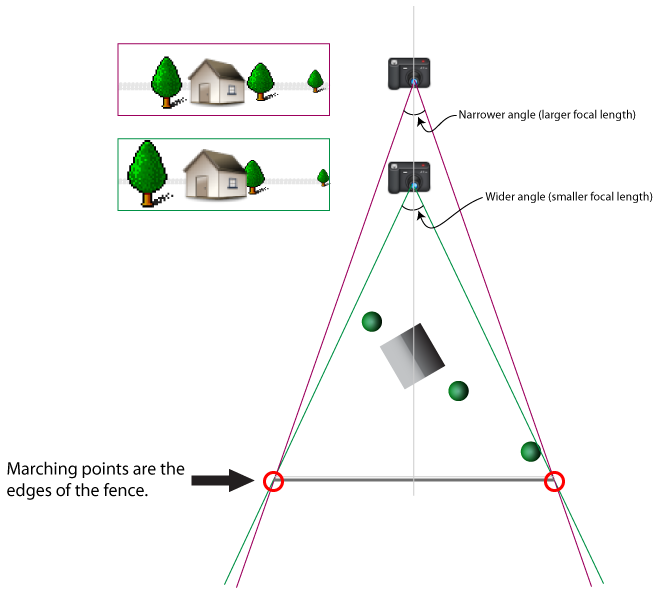I have attempted to illustrate mattdm's answer, and maybe expand on a few points.
In this first example, two cameras using different focal lengths are photographing the same scene. They have been positioned such that each will capture the full length of the fence behind the house and trees. Notice how because of the different perspective of the wide-angle camera, the second tree appears partly hidden behind the house.

In this second example, the wide-angle camera has been moved to recompose the scene. Now the arrangement of the composition of the house and nearest two trees looks more like what we get from the narrow-angle camera. But notice that by changing our perspective, we are now capturing a wider view of the background than the narrow-angle camera. The fence no longer fills the entire frame.

EDIT:
For a more mathematical explanation of the relationship between focal length (field of view), and scene width (subject size), you might want to check out the answers the question Estimating focal length range required for shooting scenario.
